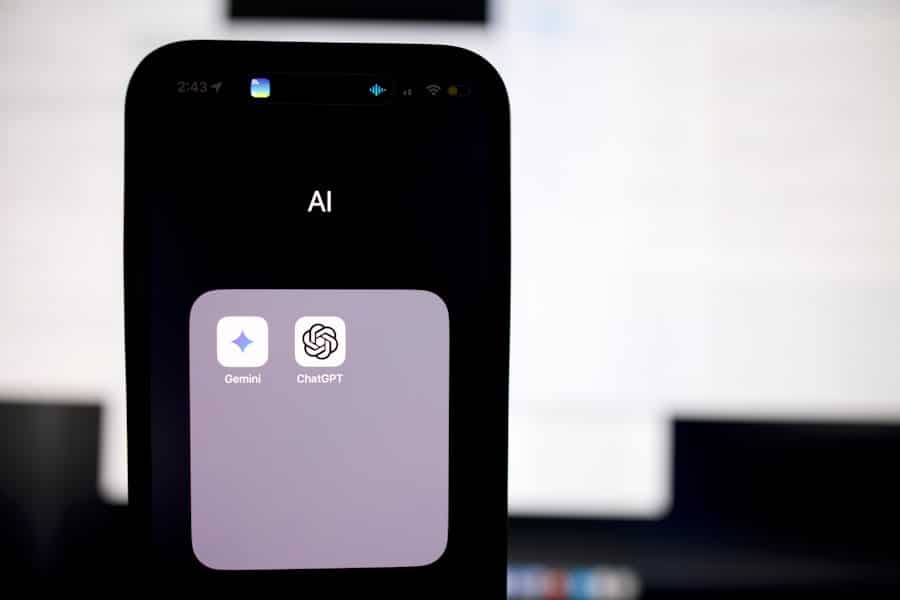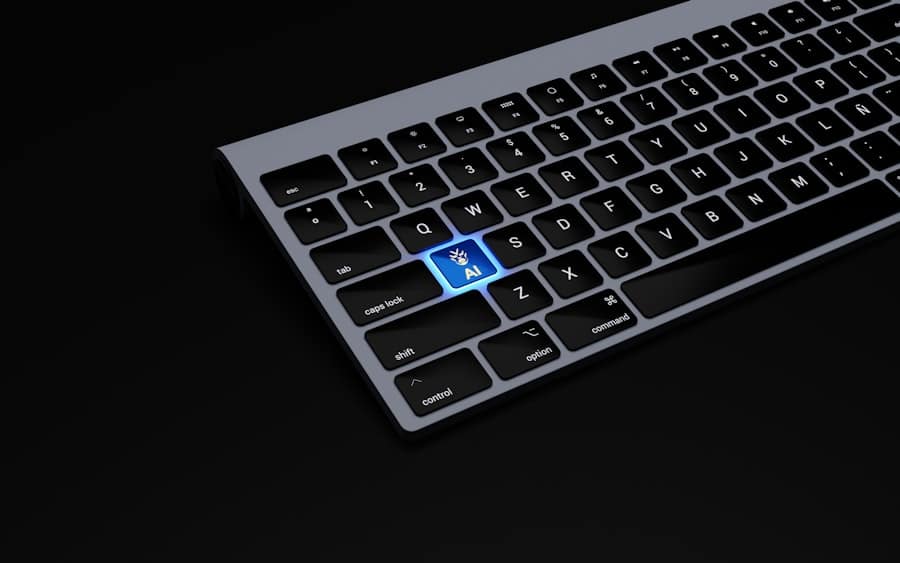The convergence of Artificial Intelligence (AI) and the Internet of Things (IoT) represents one of the most transformative technological advancements of the 21st century. AI refers to the simulation of human intelligence processes by machines, particularly computer systems, which can include learning, reasoning, and self-correction. On the other hand, IoT encompasses a vast network of interconnected devices that communicate and exchange data over the internet.
The synergy between AI and IoT is not merely a trend; it is a paradigm shift that is reshaping industries, enhancing efficiencies, and creating new opportunities for innovation. As IoT devices proliferate, generating vast amounts of data, the need for intelligent systems to analyze and interpret this information becomes paramount.
AI serves as the brain behind these devices, enabling them to learn from their environments, make decisions, and even predict future outcomes based on historical data. This integration allows for a more responsive and adaptive ecosystem where devices can operate autonomously or semi-autonomously, significantly improving user experience and operational efficiency. The implications of this integration are profound, affecting everything from smart homes to healthcare systems, transportation networks, and beyond.
Key Takeaways
- AI and IoT are two interconnected technologies that are shaping the future of connectivity and automation.
- AI enhances IoT devices by enabling them to analyze and interpret data, make autonomous decisions, and adapt to changing environments.
- The impact of AI on IoT device functionality includes improved efficiency, predictive maintenance, and enhanced security measures.
- Examples of AI-powered IoT devices include smart home assistants, wearable health monitors, and autonomous vehicles.
- The future of AI in IoT holds potential for even greater integration, automation, and innovation, but also presents challenges and ethical considerations that need to be addressed.
How AI enhances IoT devices
AI enhances IoT devices by providing them with the capability to process and analyze data in real-time, leading to smarter decision-making processes. Traditional IoT devices often operate on predefined rules and algorithms, which can limit their functionality and adaptability. However, when AI is integrated into these devices, they gain the ability to learn from their interactions with users and their environments.
For instance, a smart thermostat equipped with AI can analyze patterns in a household’s heating and cooling preferences over time. By learning when occupants are typically home or away, it can adjust temperatures accordingly, optimizing energy consumption while maintaining comfort. Moreover, AI algorithms can enhance the predictive capabilities of IoT devices.
For example, in industrial settings, AI-powered sensors can monitor machinery performance and predict potential failures before they occur. By analyzing historical data and identifying patterns that precede breakdowns, these devices can alert maintenance teams to perform necessary repairs proactively. This predictive maintenance not only reduces downtime but also extends the lifespan of equipment, leading to significant cost savings for businesses.
The impact of AI on IoT device functionality

The integration of AI into IoT devices fundamentally alters their functionality by enabling them to operate with greater autonomy and intelligence. One significant impact is the enhancement of user interaction through natural language processing (NLP). Smart assistants like Amazon’s Alexa or Google Assistant utilize AI to understand and respond to voice commands, allowing users to control various IoT devices seamlessly.
This capability transforms how individuals interact with technology, making it more intuitive and accessible. Additionally, AI empowers IoT devices to perform complex tasks that were previously unimaginable. For instance, in agriculture, AI-driven IoT sensors can monitor soil moisture levels, weather conditions, and crop health in real-time.
By analyzing this data, farmers can make informed decisions about irrigation schedules or pest control measures. This level of insight not only increases crop yields but also promotes sustainable farming practices by minimizing resource waste. The ability of AI to process vast amounts of data quickly and accurately enhances the overall functionality of IoT devices across various sectors.
Examples of AI-powered IoT devices
Numerous examples illustrate the transformative potential of AI-powered IoT devices across different industries. In the realm of smart homes, devices like the Nest Learning Thermostat exemplify this integration. This thermostat learns from user behavior over time, adjusting heating and cooling settings based on preferences and occupancy patterns.
By utilizing machine learning algorithms, it can optimize energy usage while ensuring comfort, ultimately leading to reduced utility bills. In healthcare, AI-powered wearable devices such as smartwatches have revolutionized personal health monitoring. These devices can track vital signs like heart rate and oxygen levels while employing AI algorithms to analyze trends and detect anomalies.
For instance, if a smartwatch identifies an irregular heartbeat pattern, it can alert the wearer or even notify healthcare providers in real-time. This proactive approach to health management empowers individuals to take charge of their well-being while enabling healthcare professionals to intervene promptly when necessary. In industrial applications, companies like Siemens have developed AI-driven IoT solutions for manufacturing processes.
Their MindSphere platform connects machines and sensors to a cloud-based system that leverages AI analytics to optimize production efficiency. By analyzing data from various sources, manufacturers can identify bottlenecks in their operations and implement corrective measures swiftly. This not only enhances productivity but also reduces operational costs.
The future of AI in IoT
The future of AI in IoT is poised for exponential growth as advancements in both fields continue to evolve rapidly. One promising area is the development of edge computing, where data processing occurs closer to the source rather than relying solely on centralized cloud servers. This shift allows for faster response times and reduced latency in decision-making processes for IoT devices.
As AI algorithms become more sophisticated, they will be able to operate effectively at the edge, enabling real-time analytics even in remote or bandwidth-constrained environments. Furthermore, as 5G technology becomes more widespread, it will significantly enhance the capabilities of AI-powered IoT devices.
For instance, autonomous vehicles will rely heavily on real-time data from various sensors and other vehicles on the road. The integration of AI will enable these vehicles to make split-second decisions based on their surroundings, improving safety and efficiency in transportation systems.
Challenges and limitations of AI in IoT

Despite the promising potential of AI in enhancing IoT devices, several challenges and limitations must be addressed for widespread adoption. One significant hurdle is data privacy and security concerns. As IoT devices collect vast amounts of personal data, ensuring that this information is protected from unauthorized access becomes paramount.
Cybersecurity threats pose a significant risk to both individual users and organizations that rely on interconnected systems. A breach in security could lead to unauthorized control over devices or exposure of sensitive information. Another challenge lies in the interoperability of different IoT devices and platforms.
With numerous manufacturers producing a wide array of devices using various communication protocols, achieving seamless integration can be complex. This lack of standardization may hinder the full realization of AI’s potential within IoT ecosystems. Additionally, developing robust AI algorithms that can function effectively across diverse environments remains a technical challenge that researchers are actively working to overcome.
Ethical considerations in AI-powered IoT devices
The rise of AI-powered IoT devices brings forth several ethical considerations that must be carefully navigated as technology continues to advance. One primary concern is the potential for bias in AI algorithms. If the data used to train these algorithms is not representative or contains inherent biases, it could lead to unfair outcomes or discrimination against certain groups of users.
Ensuring fairness and transparency in AI decision-making processes is crucial for building trust among users. Moreover, the pervasive nature of IoT devices raises questions about surveillance and privacy. Many smart devices continuously collect data about users’ behaviors and preferences, often without explicit consent or understanding from individuals.
Striking a balance between leveraging data for improved services while respecting user privacy rights is an ongoing ethical dilemma that requires careful consideration by developers and policymakers alike.
The potential of AI in shaping the future of IoT
The integration of AI into IoT represents a significant leap forward in technological innovation with far-reaching implications across various sectors. As these technologies continue to evolve together, they hold the potential to create smarter cities, enhance healthcare delivery systems, optimize industrial processes, and improve everyday life for individuals around the globe. However, realizing this potential requires addressing challenges related to security, interoperability, and ethical considerations.
As we look ahead, it is clear that the collaboration between AI and IoT will play a pivotal role in shaping our future landscape. By harnessing the power of intelligent systems within interconnected networks, we can unlock new levels of efficiency and innovation that were previously unimaginable. The journey toward a fully realized ecosystem where AI enhances every aspect of our lives is just beginning; thus, ongoing research and development will be essential in navigating this exciting frontier responsibly and effectively.
In a recent article on NeuronWriter SEO NLP Optimization, the focus is on enhancing content creation with advanced AI technology. This article complements the discussion on The Role of AI in Creating Smarter IoT Devices by highlighting the importance of utilizing AI for optimizing content and improving search engine rankings. Both articles underscore the significant impact of AI on various aspects of technology and digital innovation.
FAQs
What is the role of AI in creating smarter IoT devices?
AI plays a crucial role in creating smarter IoT devices by enabling them to analyze and interpret data, make autonomous decisions, and adapt to changing environments.
How does AI enhance the capabilities of IoT devices?
AI enhances the capabilities of IoT devices by enabling them to learn from data, recognize patterns, and make predictions, leading to more efficient and effective operation.
What are some examples of AI-powered IoT devices?
Examples of AI-powered IoT devices include smart home assistants, industrial robots, autonomous vehicles, and predictive maintenance systems.
How does AI improve the efficiency of IoT devices?
AI improves the efficiency of IoT devices by enabling them to automate tasks, optimize processes, and proactively identify and address issues.
What are the potential benefits of AI-powered IoT devices?
The potential benefits of AI-powered IoT devices include improved productivity, enhanced decision-making, cost savings, and the ability to create more personalized and tailored experiences for users.

